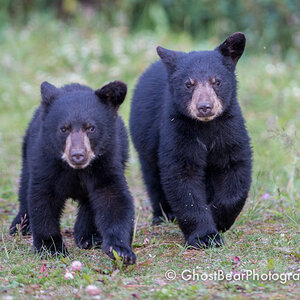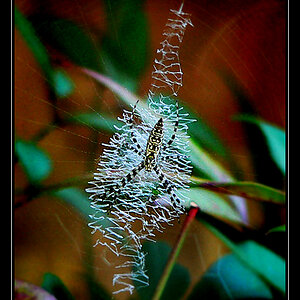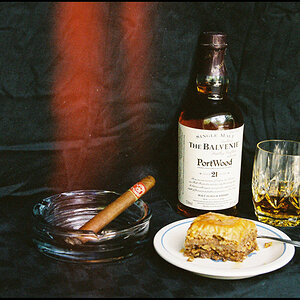Christie Photo
No longer a newbie, moving up!
- Joined
- Jan 7, 2005
- Messages
- 7,199
- Reaction score
- 148
- Location
- Kankakee, IL
- Website
- www.christiephoto.com
...what would be the difference between zooming in on a subject so that it fills the frame, versus moving closer to the subject so that it fills the frame.
Well, rather than fixed focal length vs. zoom... this is a question about long vs. short.
You can easily see this with a simple exercise. Selet an object in the room. A smaller object may illustrate this better... ie. a coffee mug on your desk. Close one eye. Now, make a circle (aperture) with one hand by touching your index fingertip to the tip of your thumb. Move the circle in and out to frame your suject.
Take note of the shape of the subject. Remember what you now see in the background.
Now, without moving you head, move the circle close to your face... pretty close... about 4 inches away. Preseving the distance between your hand and your eye, move directly toward the object until you have the same framing you started with.
Look at the shape of that object. Note what you can now see in the background.
I hope this helps.
-Pete




![[No title]](/data/xfmg/thumbnail/39/39509-3c2c5856429b4b8ff3cf44cd3b2afa8c.jpg?1619739064)
![[No title]](/data/xfmg/thumbnail/40/40284-f59f6230f0d5b9eacf977f8b0392f087.jpg?1619739407)

![[No title]](/data/xfmg/thumbnail/36/36396-f8e84def7352af726df923054b86284f.jpg?1619737549)
![[No title]](/data/xfmg/thumbnail/41/41797-ed370d68dae70f5b0a7252ec2d525912.jpg?1619739896)
![[No title]](/data/xfmg/thumbnail/41/41799-fe172a668fba7717bf773664387d64aa.jpg?1619739897)
![[No title]](/data/xfmg/thumbnail/36/36393-86ce601930c671b92b6df002b7fcbd0b.jpg?1619737548)
![[No title]](/data/xfmg/thumbnail/38/38261-db20f6f92ee8f0d4c5cf1536e308638b.jpg?1619738546)

![[No title]](/data/xfmg/thumbnail/39/39645-11fae384f9fd2ec2813acc42adec0206.jpg?1619739148)